In today’s world, maintaining good indoor air quality (IAQ) is more crucial than ever. Whether you live in a bustling city or a more rural area, the air inside your home can often be filled with pollutants such as dust, allergens, pet dander, volatile organic compounds (VOCs), and even bacteria and viruses. Fortunately, one of the most effective ways to combat these invisible threats is through advanced filtration systems.
In this article, we will guide you through the ways you can improve your indoor air quality with advanced filtration systems, helping you breathe cleaner, fresher air in your home.
What is Indoor Air Quality (IAQ) and Why Does it Matter?
Indoor air quality refers to the cleanliness and composition of the air inside a building. Poor IAQ can lead to a variety of health issues, such as respiratory problems, headaches, fatigue, and allergies. Long-term exposure to polluted indoor air can even lead to more serious conditions like asthma and cardiovascular disease.
According to the Environmental Protection Agency (EPA), indoor air pollution is one of the top five environmental risks to public health. This makes it essential to monitor and improve the air quality inside your home.
How Do Advanced Filtration Systems Work?
Filtration systems work by trapping particles and pollutants that would otherwise remain in the air. Traditional air filters are often made of basic mesh materials, which only capture larger particles like dust. Advanced filtration systems, on the other hand, use more complex technologies to target a wider range of pollutants, including microscopic particles, gases, and even bacteria.
1. High-Efficiency Particulate Air (HEPA) Filters


HEPA filters are one of the most popular and efficient air filtration options available. These filters are capable of trapping particles as small as 0.3 microns, which means they can catch dust, pollen, pet dander, mold spores, and even bacteria. In fact, HEPA filters can remove up to 99.97% of airborne particles, making them an essential choice for improving IAQ in homes, especially for those suffering from allergies.
Learn more about HEPA filters at Filtrete.
2. Activated Carbon Filters
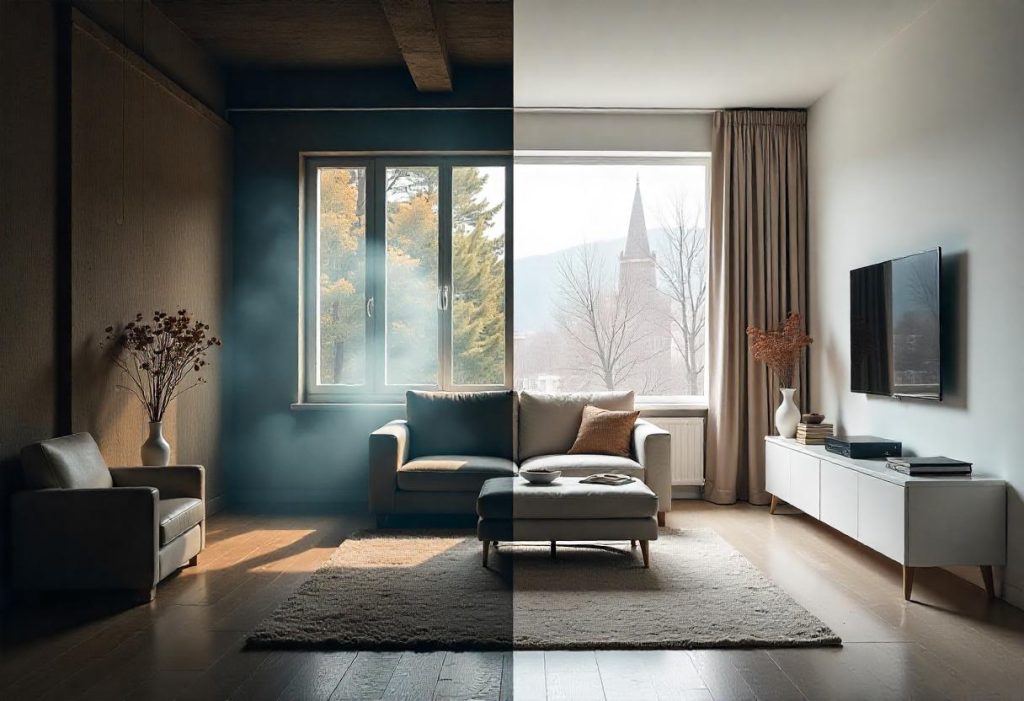

If you’re dealing with odors, chemicals, or gases, activated carbon filters are the solution you need. These filters work by adsorbing gases, such as VOCs, tobacco smoke, and kitchen odors. Activated carbon is highly porous, which gives it a vast surface area for trapping these pollutants. Many modern air purifiers combine HEPA and activated carbon filters for optimal filtration of both particles and gases.
Find more on activated carbon filters at Air Purifiers America.
3. UV-C Light Purification


UV-C light technology is a powerful addition to air filtration systems, particularly for killing viruses, bacteria, and mold spores. UV-C light disrupts the DNA of microorganisms, rendering them harmless. This technology is particularly beneficial in environments where sterilization is important, like healthcare settings or homes with young children and elderly residents.
Explore UV-C air purification at GermGuardian.
4. Electrostatic Filters


Electrostatic filters are another advanced option for improving indoor air quality. These filters use an electric charge to attract particles like dust and pollen, which are then trapped by the filter. Electrostatic filters are often reusable and can be washed, which makes them a cost-effective choice over time.
Learn about electrostatic air filters from Air & Water.
5. Ionizers and Ozone Generators
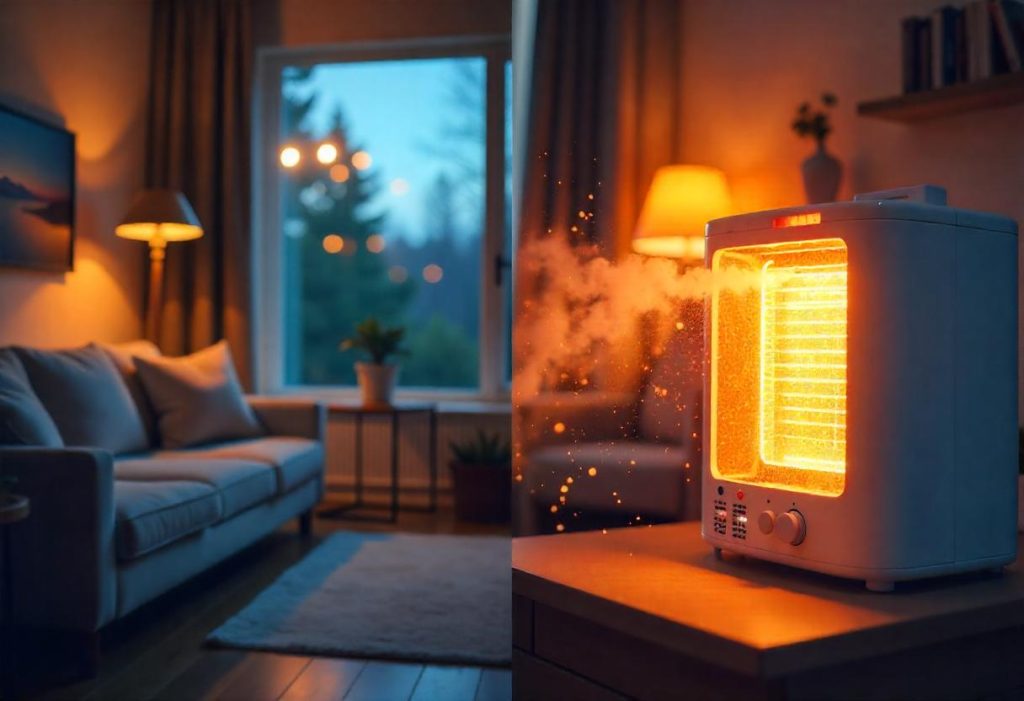

Ionizers work by emitting negatively charged ions that attach to airborne particles, causing them to become heavy and fall to the ground. While effective at removing particles from the air, ionizers can produce trace amounts of ozone, which may not be safe for everyone. Ozone generators, on the other hand, are designed to produce larger amounts of ozone to eliminate odors and bacteria, but they should be used with caution, as high concentrations of ozone can irritate the respiratory system.
For more information on ionizers and ozone generators, check out EnviroKlenz.
6. Air Purifiers with Smart Features
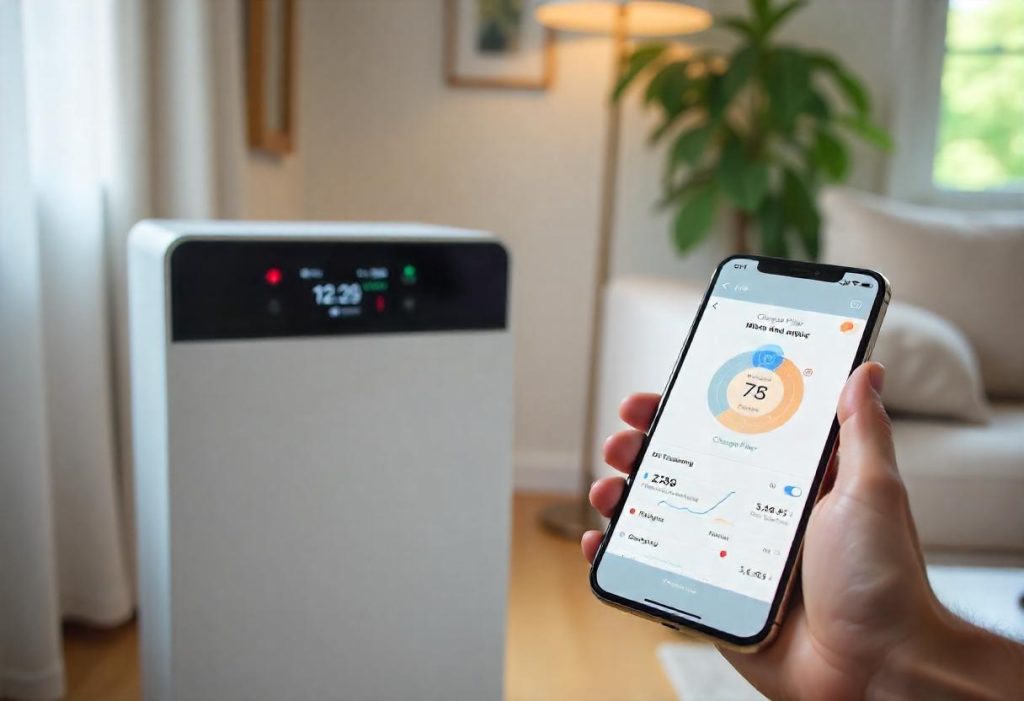

The latest air purifiers come equipped with smart features that allow you to monitor and control air quality in real-time. Many of these systems are connected to mobile apps, letting you track air quality levels, adjust filtration settings, and even receive notifications when the filters need to be changed. Smart air purifiers are ideal for tech-savvy homeowners who want a more hands-on approach to managing their indoor environment.
Check out smart air purifiers at Honeywell Air Purifiers.
7. Air Exchange Systems (Ventilation)
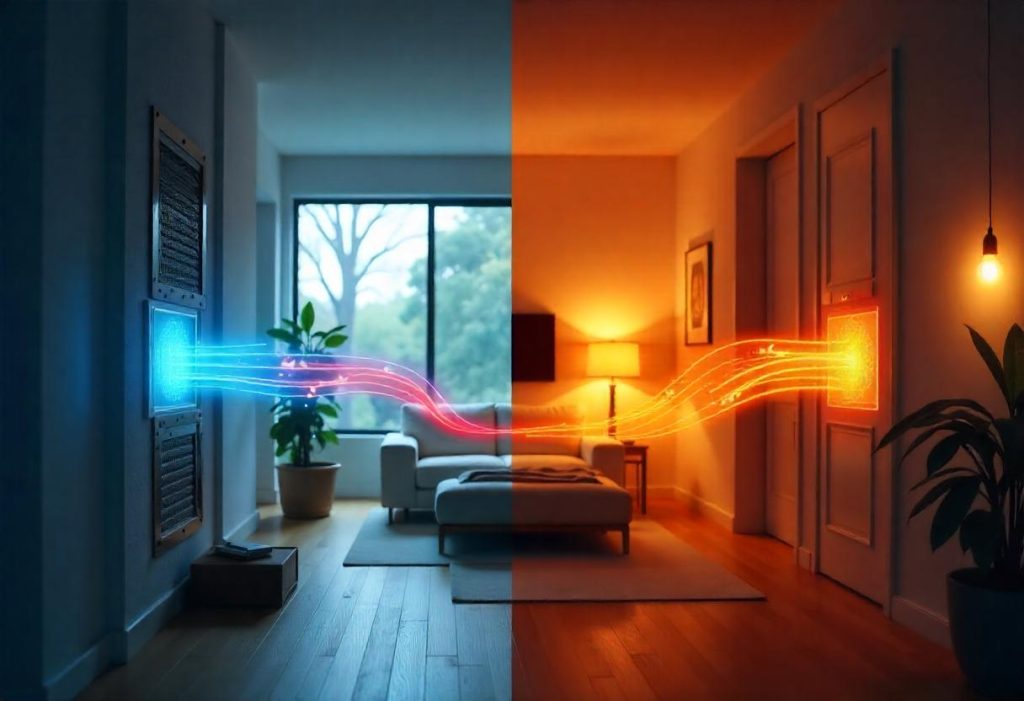

While filtration is important, it’s also essential to ensure proper ventilation in your home. Air exchange systems, like Energy Recovery Ventilators (ERVs) and Heat Recovery Ventilators (HRVs), help to bring in fresh air while removing stale, polluted air. These systems help improve IAQ while maintaining energy efficiency, as they transfer heat or moisture between incoming and outgoing air, reducing the need for heating or cooling.
Read about air exchange systems at Broan.
8. MERV Rating and Choosing the Right Filter
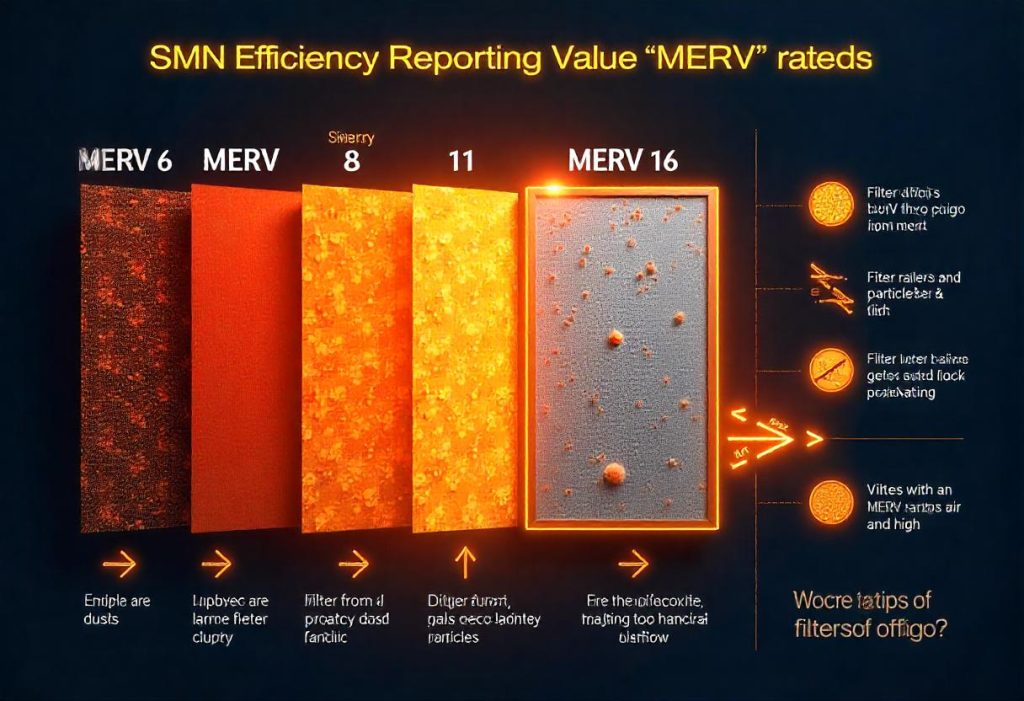

The Minimum Efficiency Reporting Value (MERV) rating system is a standard for measuring the effectiveness of air filters. A higher MERV rating indicates better filtration efficiency. If you want to remove smaller particles from your indoor air, look for filters with a MERV rating of 11 or higher. However, it’s important to balance filtration efficiency with airflow. A filter that’s too dense can restrict airflow and strain your HVAC system.
Explore MERV ratings and find the best filter for your needs at The Home Depot.
9. Regular Maintenance of Your Filtration System
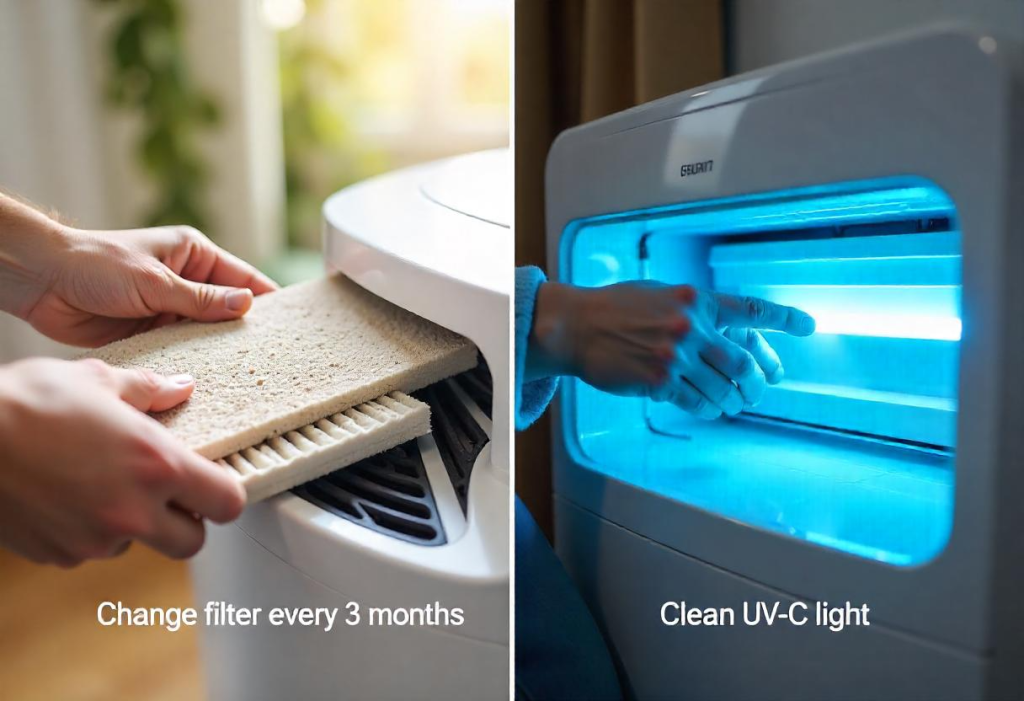

To ensure that your filtration system continues to operate at its peak efficiency, it’s essential to maintain it regularly. This includes changing filters as recommended, cleaning UV-C lights and electrostatic filters, and having your air purifier serviced as needed. Regular maintenance not only ensures cleaner air but also prolongs the life of your equipment.
Learn more about air purifier maintenance at Air Purifier Ratings.
Conclusion
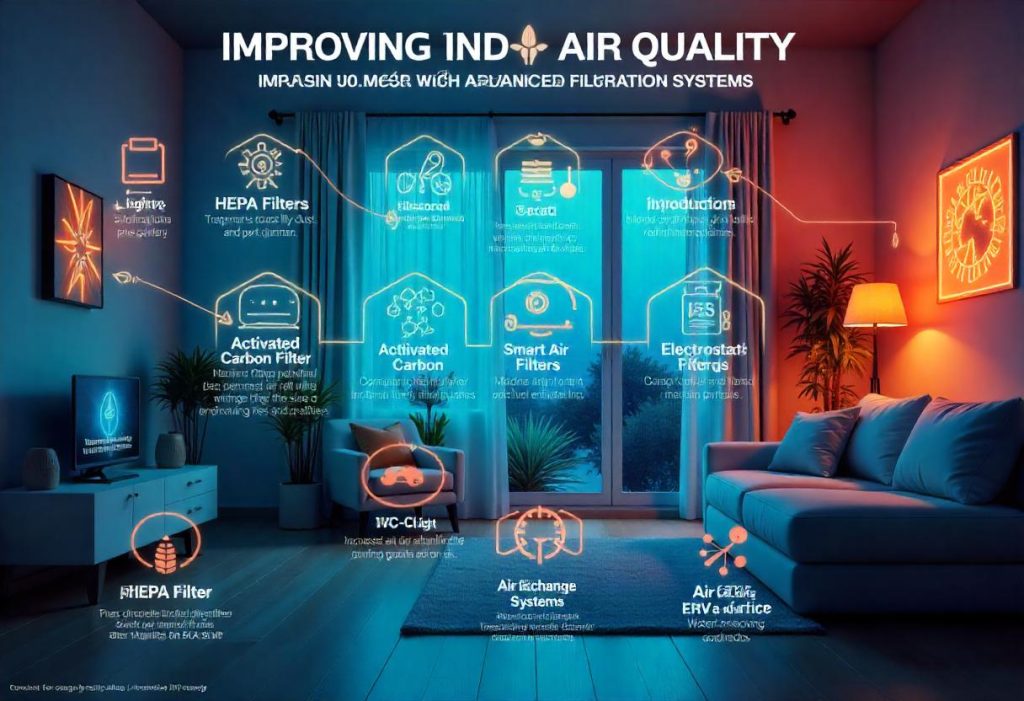

Improving indoor air quality with advanced filtration systems is one of the best investments you can make for the health and well-being of your family. By choosing the right filtration technologies—such as HEPA filters, activated carbon filters, UV-C light, and smart air purifiers—you can dramatically reduce airborne pollutants and enjoy cleaner, healthier air indoors. Additionally, don’t forget about proper ventilation and routine maintenance to keep your air purifiers performing at their best.
